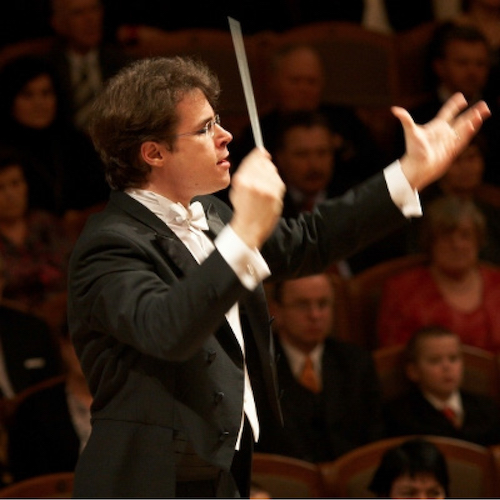by Daniel Hathaway

Though subtitled “Passacaglia for Orchestra,” the 25-minute work, written from 1953-1957, is less a formal set of variations over a repeating pattern than it is a metaphor for the cosmos, where mutations of patterns are endlessly repeated. Or on a purely musical level, Mysterium času can be heard as a grand, unhurried crescendo from its opening lines in the bass clarinet to a powerful, prolonged climax that finally thins out to nothingness. Hrůša paced a gripping performance from a highly responsive Cleveland Orchestra.
Dessert in the form of Stravinsky’s Capriccio for piano and orchestra came before the main course in this program, which I heard on Sunday afternoon, November 18. When Stravinsky wrote the three-movement work between 1928 and 1929, he had the cimbalom in his ears and Baroque orchestral techniques in mind, influences that are apparent in his crystalline writing for the piano and his use of smaller groups of instruments as a foil to the larger ensemble.
He wrote the work as a showpiece for his own keyboard talents, but for this occasion, the affable soloist was Emanuel Ax, who played with incisive rhythm, changed gears flawlessly between a number of musical styles, and delivered a delightfully extroverted cadenza at the end of the second movement.

That main-course item was Shostakovich’s iconic Symphony No. 5, first performed in 1937 in Leningrad, an event that followed the forced withdrawal of the composer’s Fourth Symphony and coincided with the beginning of Stalin’s “Great Terror.”
Weighted down as it is by interpretational baggage, it’s difficult to experience Shostakovich 5 merely on its own musical terms and without trying to rationalize its ambiguities. But Hrůša and the Orchestra turned in a stunning reading that was in turn powerfully dramatic (the Moderato), suffused with Mahlerian charm (the Allegretto), intensely bleak (the Largo), and officially triumphant (the finale).
Hrůša has obviously pored over the score, stripping away some of the performance traditions the piece has acquired since its premiere. One of the most telling came at the end of the finale, where more than one conductor makes a huge rallentando as the timpani are hammering away under the last chord. On Sunday, Hrůša drove the piece home at an inexorably steady tempo that may have underscored the ambivalence the composer was feeling about the key of D Major at the time.
Published on ClevelandClassical.com November 27, 2018.
Click here for a printable copy of this article



